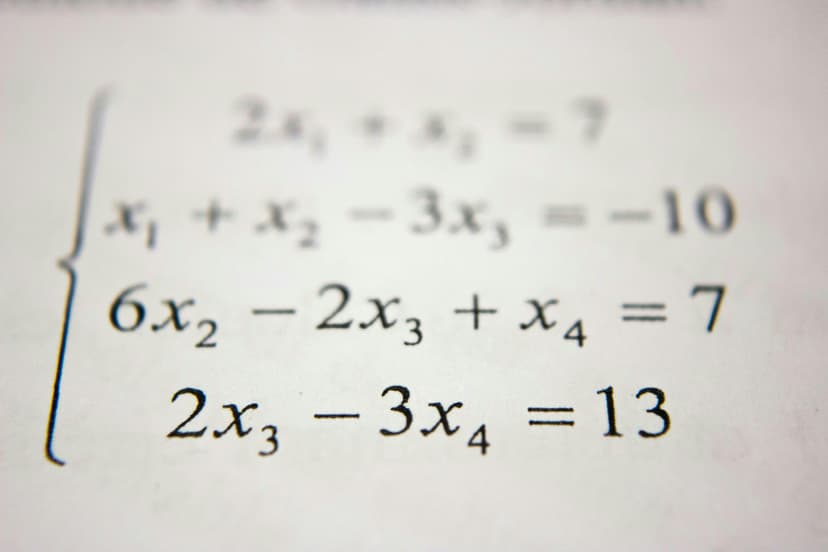Executive Assessment (EA) vs. GMAT: Which Should You Take?
Confused about Executive Assessment vs GMAT? Discover the key differences in EA vs GMAT scoring, format, and who should take which for MBA admissions.
Posted July 11, 2025

Join a free event
Learn from top coaches and industry experts in live, interactive sessions you can join for free.
Table of Contents
Choosing the right admissions exam is a critical decision for MBA applicants. With the emergence of the Executive Assessment (EA), many candidates now find themselves weighing the Executive Assessment vs GMAT. Whether you're aiming for full-time MBA programs, Executive MBA programs, or flexible online formats, understanding the key differences between these exams can help you choose the one that aligns with your goals, experience level, and schedule.
This guide will break down everything from exam structure, scoring, and content to who should take each test, and why.
What Are the GMAT and Executive Assessment?
The Graduate Management Admission Test (GMAT) is a long-established standardized test developed by the Graduate Management Admission Council (GMAC). It measures analytical writing, quantitative reasoning, verbal reasoning, and integrated reasoning skills. Most business schools worldwide consider GMAT scores a reliable measure of business school readiness and academic potential.
The Executive Assessment (EA), also created by GMAC, is a relatively new exam designed for mid-career professionals. The executive assessment test evaluates the practical skills needed in executive MBA and EMBA programs, focusing more on management-level business skills, business intuition, and decision-making. It’s a preferred option for experienced professionals looking to demonstrate readiness without the intense prep GMAT typically demands.
Breakdown of Executive Assessment and GMAT Exam Structure
GMAT Exam Structure
The GMAT exam is a computer-adaptive test with a duration of approximately 3 hours and 30 minutes. It consists of four sections:
- Analytical Writing Assessment – 1 topic | 30 minutes
- Integrated Reasoning Section – 12 questions | 30 minutes
- Quantitative Reasoning – 31 questions | 62 minutes
- Verbal Reasoning – 36 questions | 65 minutes
GMAT quant and verbal sections are adaptive, which means the difficulty adjusts as you progress. This structure tests a wide range of problem-solving abilities, critical reasoning, and comprehension skills.
Read: 3 Things You Need to Know About the New GMAT Focus Edition
Executive Assessment Exam Structure
The EA exam is also a computer-adaptive test, but shorter, only 90 minutes total. It includes:
- Integrated Reasoning – 14 questions | 30 minutes
- Verbal Reasoning – 14 questions | 30 minutes
- Quantitative Reasoning – 14 questions | 30 minutes
Note: Unlike the GMAT, the EA does not currently include the Analytical Writing Assessment. However, some pilot versions or specific test centers may include a Written English Assessment.
Both exams test your ability to analyze information and make sound decisions, but the EA is designed with experienced professionals in mind, making it ideal for executive MBA programs.
Key Differences of Executive Assessment and GMAT
When comparing the executive assessment vs GMAT, several major key differences emerge:
| Feature | GMAT | Executive Assessment |
|---|---|---|
| Duration | ~3.5 hours | ~1.5 hours |
| Target Audience | All MBA applicants | Mid-career professionals |
| Test Style | Adaptive per question | Adaptive per section |
| Scoring | 200–800 | 100–200 |
| Sections | AWA, IR, QR, VR | IR, QR, VR |
| Availability | Widely available | Limited test centers, growing availability |
| Accepted By | Most MBA programs | Select executive MBA and MBA programs |
The GMAT offers a deeper dive into academic potential and is accepted by top business schools for full-time MBA programs. The executive assessment is designed to evaluate management-level business skills through a more streamlined test that better accommodates working professionals.
Scoring System: GMAT vs Executive Assessment
Both tests use a computerized scoring system. Here’s how they compare:
GMAT Scores
- Total score: 200–800
- Sectional scores for AWA (0–6), IR (1–8), QR (6–51), and VR (6–51)
- Includes percentile ranks for benchmarking against other test takers
EA Scores
- Total score: 100–200
- No sectional breakdown
- Based on cumulative performance in integrated reasoning, verbal reasoning, and quantitative reasoning
EA scores are not broken down sectionally, but still give business schools a clear sense of your capabilities. The GMAT, by contrast, gives admissions committees granular insights through analytical writing assessment, quant, and verbal subscores.
Who Should Take the Executive Assessment?
The executive assessment (EA) is designed for mid-career professionals with 10–15 years of experience. If you’re working full-time, balancing career and personal life, and looking into executive MBA programs, this exam is likely a better fit. It's shorter, requires less preparation, and focuses on real-world business logic.
It’s also ideal for those who may be nervous about the quantitative and verbal sections in the GMAT, or for professionals who want a more application-based exam rather than a highly academic one.
Who Should Take the GMAT?
The GMAT exam is ideal for younger MBA applicants or those aiming for top business schools offering full-time MBA programs. Its rigor allows schools to evaluate your potential for academic success across a variety of analytical and data-based tasks.
If your chosen MBA programs list GMAT as their preferred test, or do not accept the EA, the GMAT is a better option. It’s also often required if you plan to apply for dual-degree programs or specialized tracks.
Test Availability and Cost
Both the GMAT and Executive Assessment are available year-round at authorized test centers and are also offered online. While both exams now have comparable accessibility, it’s still important to check availability in your region and plan your test date early.
In terms of exam cost, the GMAT Focus Edition costs $275, while the Executive Assessment costs $350, making the EA slightly more expensive. Always confirm pricing with GMAC, as fees may vary slightly depending on location and rescheduling policies.
GMAT Prep Tips
The GMAT is a deep dive into your quantitative, verbal, and analytical reasoning abilities. It’s designed to challenge even high-performing candidates, so give yourself time and structure.
1. Take a Diagnostic Practice Test Early
Start with a full-length practice exam to get a realistic sense of timing and performance. It will help you identify your weakest areas, whether it's data sufficiency, critical reasoning, or integrated reasoning.
2. Build a Study Plan That Matches Your Timeline
Aim for 2–3 months of consistent study. Set weekly targets and break prep into manageable sections, alternate between quant and verbal sections to avoid burnout.
3. Choose high-quality resources
Use official GMAT prep materials, adaptive online platforms, or structured prep courses. Prioritize tools that mirror the computer-adaptive format of the actual exam.
4. Master High-Yield Question Types
Focus on question types that frequently appear:
- Quantitative Reasoning - Data sufficiency, word problems, algebra, and number properties
- Verbal Reasoning - Reading comprehension, sentence correction, and critical reasoning
- Analytical Writing Assessment - Practice analyzing arguments and structuring coherent, logical essays
- Integrated Reasoning - Get comfortable with multi-source reasoning, table analysis, and data insights
5. Refine Your Timing Strategy
GMAT is a computer-adaptive test, so pacing matters. Practice finishing each section with 1–2 minutes to spare. Build muscle memory for how long to spend per question (about 2 min in quant, 1.8 min in verbal).
6. Review and Retest
Use practice tests every 2–3 weeks to track progress. Review not just incorrect answers but also the logic behind correct ones.
Read: How to Study for GMAT: The GMAT Tutor's Guide
EA Prep Tips
1. Understand the Format Before You Start
The EA is a 90-minute computer adaptive test, with no essay section in most cases. It includes:
- Integrated Reasoning – 14 questions
- Quantitative Reasoning – 14 questions
- Verbal Reasoning – 14 questions
Each section is 30 minutes, so every question counts. Learn the format to maximize efficiency.
2. Use EA-Specific Prep Tools
Many GMAT materials are helpful, but EA prep requires its own approach. Look for official GMAC EA practice questions or courses like ExecutiveAssessment.com, which offer test-takers-specific drills and strategies.
3. Focus on Practical Reasoning and Efficiency
EA questions reward efficiency and business logic more than academic depth. Practice making data-driven decisions quickly, identifying key takeaways from tables, graphs, or passages, especially in the integrated reasoning section.
4. Lean on Your Professional Experience
Unlike the GMAT, the EA assumes you bring real-world experience. Use your work knowledge to quickly navigate scenarios involving project planning, resource allocation, and team management.
5. Build a Study Plan That Fits Your Schedule
Prep can often be done in 4–6 weeks with 30–45 minutes a day. Create a routine that fits your calendar, early mornings, lunch breaks, or short evening sessions. Consistency is key.
6. Take Full-Length EA Practice Exams
You’ll only get one shot per section, no breaks or redo. Simulate real test date conditions to build confidence and timing accuracy. Use the results to refine your study.
Top Business Schools That Accept Each Test
Business Schools That Accept GMAT Scores
- Harvard Business School
- Stanford Graduate School of Business
- Wharton School of the University of Pennsylvania
- Columbia Business School
- MIT Sloan
- Chicago Booth
Business Schools That Accept Executive Assessment Scores
- INSEAD
- Wharton EMBA
- Columbia EMBA
- MIT Sloan EMBA
- Chicago Booth EMBA
Before you choose, always verify which business schools accept the test you’re targeting, and whether your program of interest lists one as their preferred test.
The Bottom Line
If you're early in your career and applying to full-time MBA programs, the GMAT is likely your best option due to its academic depth and broad acceptance. If you're a mid-career professional aiming for an executive MBA, the Executive Assessment offers a shorter, more practical alternative tailored to your experience and schedule. Both exams can lead to top programs; what matters most is choosing the one that fits your background, goals, and prep timeline.
How Top Coaches Can Help You Succeed
There’s no one-size-fits-all answer when deciding between the GMAT exam and the Executive Assessment test, the right choice depends on your professional experience, target MBA programs, available prep time, and comfort with standardized test scores. While the GMAT is best suited for applicants aiming for full-time MBA programs and seeking to showcase strong analytical writing, quantitative reasoning, and verbal reasoning skills, the executive assessment is ideal for experienced professionals applying to executive MBA programs who prefer a shorter, more streamlined exam focused on management-level business skills.
Regardless of your path, working with a top GMAT or executive assessment coach can be a game-changer. These experts help test takers craft personalized study plans, master complex question types, and stay accountable throughout the prep journey. With professional coaching, you'll not only improve your test scores but also gain the confidence and strategy needed to tackle either exam and stand out in the MBA admissions process.
Read these next:
- The 10 Best GMAT Tutors
- Top 50+ Free Resources for GMAT & GRE Practice
- How to Craft the Ultimate MBA Resume–With Examples
- How Late Can You Take the GMAT/GRE for MBA Applications?
FAQs
Do all business schools accept the Executive Assessment?
- No, not all business schools accept the EA. While many top Executive MBA programs do, it’s important to check each program’s testing requirements before choosing which exam to take.
How do I decide which test is better suited for my MBA application?
- Your choice depends on your experience level, goals, and the programs you're applying to. The GMAT is often preferred for full-time MBA programs, while the EA is designed for experienced professionals applying to executive or part-time MBA programs.
Is the Executive Assessment easier than the GMAT?
- The EA is shorter and focuses on practical skills, making it less intensive than the GMAT. However, what’s “easier” depends on your strengths—some may find the GMAT's academic focus more challenging, while others may prefer the EA's real-world approach.
How long are GMAT and Executive Assessment scores valid?
- Both GMAT and EA scores are valid for five years, giving you flexibility in planning your MBA applications.
Can I take both the GMAT and the Executive Assessment?
- Yes, you can take both exams. However, it's important to check whether your target schools prefer one over the other, as submitting the right test can strengthen your application.
Browse hundreds of expert coaches
Leland coaches have helped thousands of people achieve their goals. A dedicated mentor can make all the difference.


























